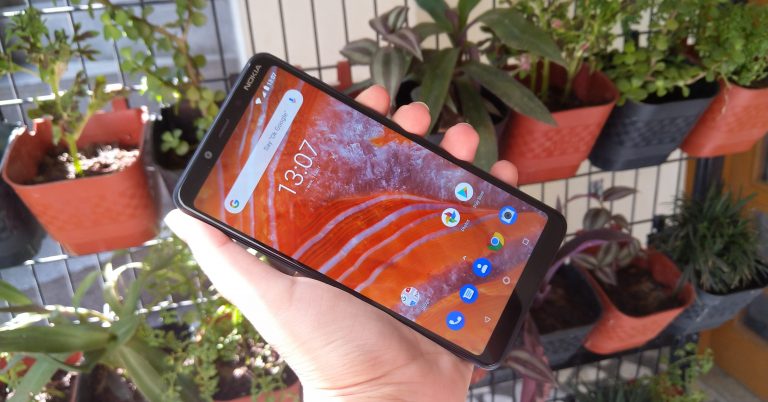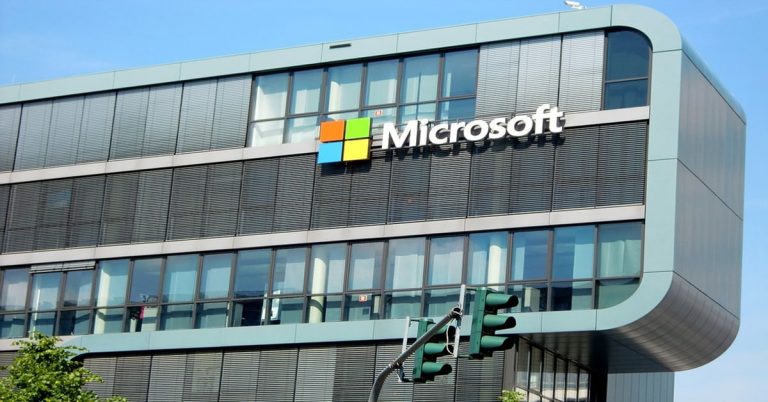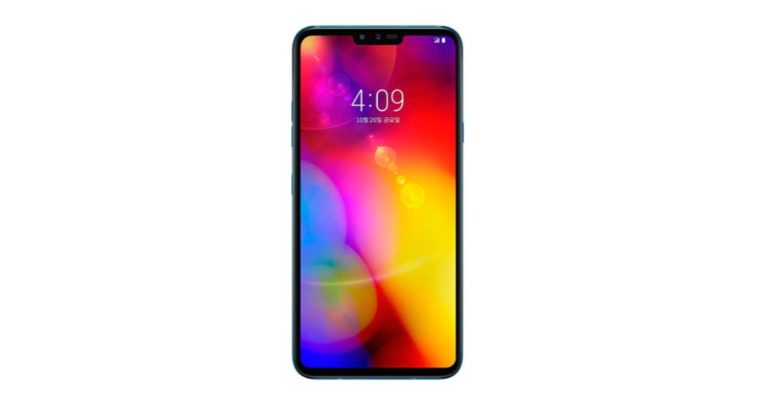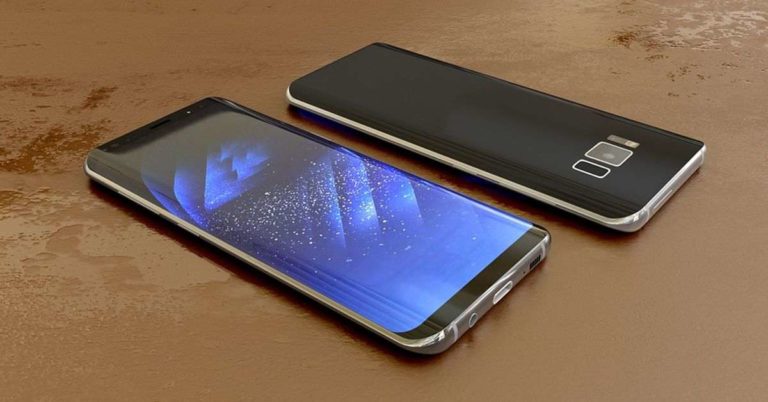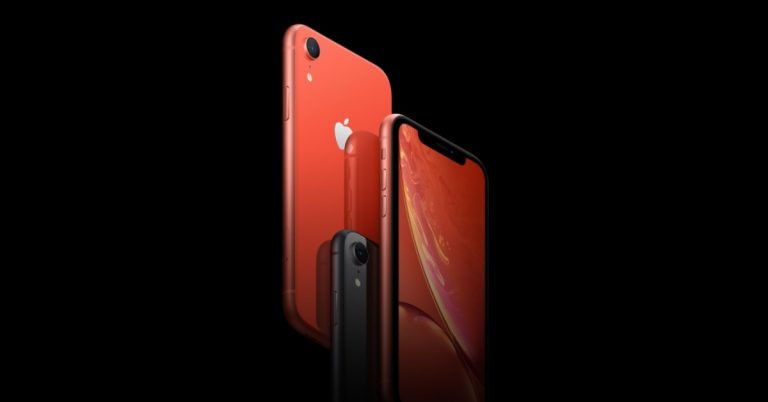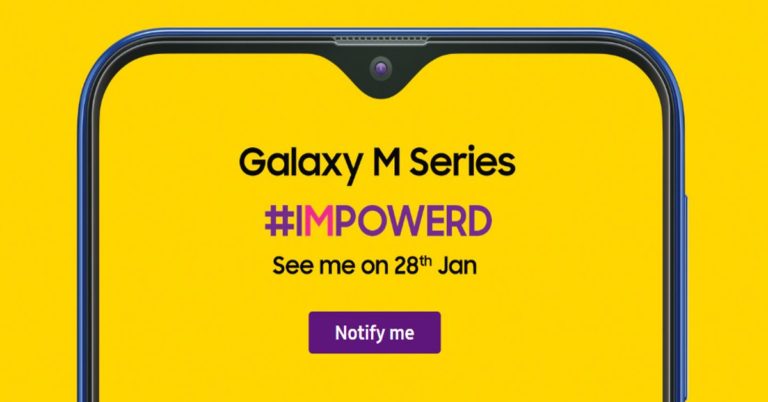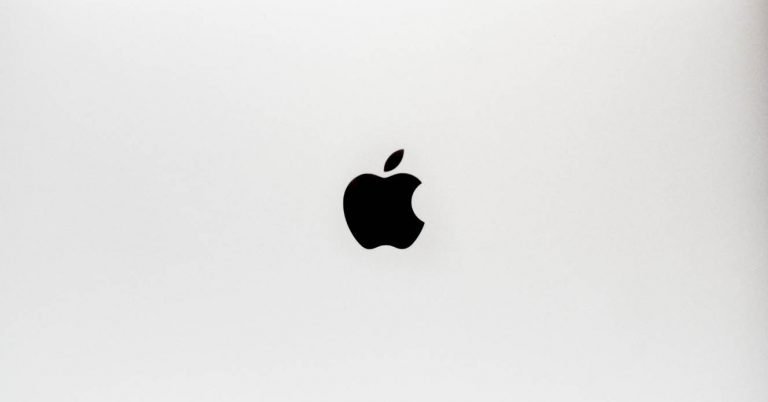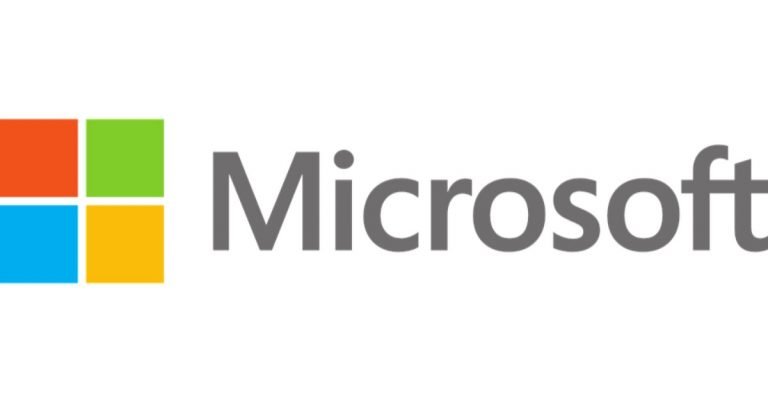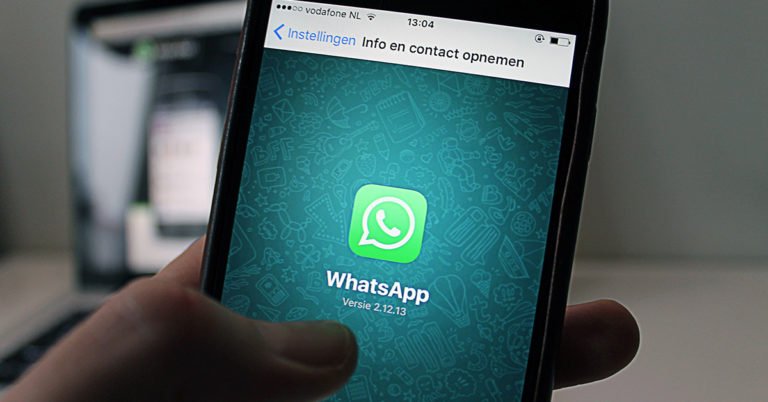Samsung Galaxy A30 specifications revealed by Geekbench
The Samsung Galaxy A30 has just been listed on Geekbench. From that, we know that the smartphone would run on Android Pie out-of-the-box. The smartphone is going to be powered by an Exynos 7885 SoC and will be coupled with 4GB RAM. In an earlier listing, it was mentioned that the Samsung Galaxy A30 will come in 32GB and 64GB storage variants. However, it is unknown as of now whether both of them will come with the 4GB RAM. This report is in sync with an earlier report that says that the Galaxy A30 will launch with nine phones in mid-range price category..
The latest Geekbench leak, that talks about the smartphone’s specifications showcased it with the model number SM-A305F. To talk about the processor, the Samsung Galaxy A30’s Enxnos 7885 SoC is the same as the Galaxy A8 and the Galaxy A8+. The Samsung Galaxy A8 measures 149.2×70.6×8.4mm and weighs 172grams.The smartphone sports a Super AMOLED capacitive 5.6-inch touchscreen with a resolution of 1,080×2,220 pixels and an aspect ratio of 18.5:9.
The Galaxy A8 runs on Android Oreo and has a 4GB RAM which comes in two storage options. These options include 32GB and 64GB internal storage. There is a dual front camera setup that includes an 8MP and a 16MP sensor. The back camera includes a single sensor of 16MP. Connectivity options include WiFi 802.11, Bluetooth 5.0, GPS, NFC, FM Radio and USB 2.0. The device packs a 3,000mAh battery that is non-removable.
The Samsung Galaxy A8+ sports a Super AMOLED 6-inch capacitive touchscreen that has a resolution of 1080×2220 pixels and an aspect ratio of 18.5:9. The 4GB RAM variant comes with 32GB internal storage, and the 6GB RAM comes with 64GB internal storage. The storage is expandable with the help of a microUSB card slot up to 256GB. Connectivity options include WiFi 802.11, Bluetooth 5.0, GPS, NFC FM Radio and USB 2.0. The Samsung Galaxy A8+ packs a non-removable battery of 3,500mAh.
Image courtesy: geekbench
For the latest gadget and tech news, and gadget reviews, follow us on Twitter, Facebook and Instagram. For newest tech & gadget videos subscribe to our YouTube Channel.
Oppo Find X2’s design leaks in a video
The Oppo Find X smartphone was talked about a lot last year primarily because of its futuristic design. The device came with a slider that housed the selfie cameras, face unlock sensors as well as the rear cameras. It added to the looks of the smartphone as because it had a slider, it didn’t have a notch on the top. And now, a report in has surfaced online which highlights various design aspects of the Oppo Find X2 smartphone.
According to a video released by YouTuber MrWhoseTheBoss, Oppo Find X2 will come with a 10x optical zoom technology and will have the new in-display fingerprint sensor technology that was announced last week.
According to the video, Oppo Find X2 will come with a camera technology similar to Samsung’s variable aperture camera that was seen in Galaxy S9. As per the video, the cameras of the upcoming Oppo Find X2 will come with the 10x optical zoom technology, a night mode feature and the variable aperture camera. He also said that the device will sport a Time of Flight 3D camera, which can be used for 3D scanning and full body frame adjustment.
However, there is no clarity on whether the device will come with a slider design or not, as because of it, Oppo Find X could not come with an IP rating. With this, we can derive that the Oppo Find X2 may come with some level of water-proofing.
It has been reported that with Find X2, Oppo will instead be going for a hole-in-display design to house the selfie camera. Although that means no 3D face unlock feature, but then, the smartphone will come with an in-display fingerprint technology. Reports also suggest that the smartphone would have a wider scanning are and that supports two-finger unlocking.
The upcoming smartphone is also expected to come with the company’s SuperVOOC technology that can charge a 3,400mAh battery from 0 to 100% in just 35 minutes. We should mention that Oppo Find X came with the company’s VOOC technology and only its special edition variants had the SuperVOOC fast charging.
Video courtesy: MrWhoseTheBoss
For the latest gadget and tech news, and gadget reviews, follow us on Twitter, Facebook and Instagram. For newest tech & gadget videos subscribe to our YouTube Channel.
Here’s a first look at WhatsApp’s Dark Mode
One among the most anticipated features of WhatsApp is surely the Dark mode. One of the main reasons behind this is that Dark mode is known to enhance the battery life of Android smartphones. Another reason is that the mode has been gaining popularity since a number of apps like Twitter, YouTube and Pocket opted for it.
While it is known for quite some time that WhatsApp Dark mode has been in development, a report has surfaced online which gives us the first glimpse of the much-talked-about mode that will soon be rolling out on both Android and iOS.
With the Dark Mode, the white background of the app turns into Black and a lot of users find it to be more comforting to the eyes. And as we mentioned earlier, the mode also helps in increasing the battery life of smartphones. We should point out that Google has admitted that Dark Mode draws around 43% less battery even when the device’s brightness is set to maximum. A number of popular apps like Twitter, YouTube, Google Maps and Pocket have already got the Dark mode and it is said to be one among the most-highlighted features of Android Pie too.
Speaking of the Dark Mode on WhatsApp, WABetainfo, the Twitter account that reports about WhatsApp’s updates in beta mode, has shared a screenshot of the concept image of the Dark Mode on WhatsApp. While it is just a concept image, it is our first look at what the Dark Mode in WhatsApp would look like.
In unrelated news, WhatsApp today announced that it has rolled out the limit to sending forward messages to five chats globally. This has been done to curtail fake news, which in many parts of the world has contributed to both online and offline violence. It is worth noticing that this feature was first launched in India in July 2018 and the company has said that it has decided to roll it out across the world only after testing it for six months and taking into account user’s feedback. The update has already started rolling out today. For the latest gadget and tech news, and gadget reviews, follow us on Twitter, Facebook and Instagram. For newest tech & gadget videos subscribe to our YouTube Channel.A follower sent me this **concept** of WhatsApp for Android with a Dark Mode (OLED compatible).
— WABetaInfo (@WABetaInfo) January 20, 2019
Do you like it? pic.twitter.com/DxGZtdNqZy
WhatsApp starts limiting forward messages to 5 chats globally
In July 2018, the message forwarding limit in WhatsApp was decreased to a maximum of five chats in India. And now, WhatsApp has decided to roll out this limit to forwarding messages on a global scale. Now the limit of forwarding WhatsApp messages to five chats will not just be applicable in India, but all WhatsApp users in the world will have to comply with it.
This encompasses both Android and iOS versions of the popular instant messaging app. The update has already started rolling out to WhatsApp users across the globe. The primary reason behind rolling out the update on a global level is to curb the spread of fake news and for WhatsApp to maintain its role as a private messaging platform.
WhatsApp had said when it first launched this update in India, “We built WhatsApp as a private messaging app – a simple, secure, and reliable way to communicate with friends and family. And as we’ve added new features, we’ve been careful to try and keep that feeling of intimacy, which people say they love. In India – where people forward more messages, photos, and videos than any other country in the world – we’ll also test a lower limit of 5 chats at once and we’ll remove the quick forward button next to media messages.”
There have been a lot of fake rumours that perpetuated in the form of WhatsApp messages over a long period of time. The fake news spread via WhatsApp messages bred a lot of contention amongst users and led to trolling and online violence. There have also been some severe cases in which this online bullying was followed by offline violence. This led to a few deaths as well. All this forced WhatsApp to take measures to prevent fake news from reaching to the masses.
And hence it updated its message forwarding feature that limited the number of forwards to five chats. This, WhatsApp said, would ensure that sensitive news is not spread beyond a certain limit and conversations can be as private as possible. With the global roll out, WhatsApp is applying the same strategy for other countries as well.
For the latest gadget and tech news, and gadget reviews, follow us on Twitter, Facebook and Instagram. For newest tech & gadget videos subscribe to our YouTube Channel.
Samsung announces its Exynos 7904 processor for mid-range smartphones
South Korean technology giant Samsung has unveiled its latest processor that will be used in budget and mid-range smartphones. Samsung’s latest SoC is called Exynos 7904 and according to the company, it is based on ARM’s A73 cores from 2016. So the chipset uses the same cores as MediaTek’s Helio P60 mid-range processor but is supposed to come with a configuration that will make it work more efficiently.
Prior reports have suggested that the Exynos 7904 processor will power the Samsung Galaxy M20 smartphone. Now that the company has launched it just before unveiling its Galaxy M10 and Galaxy M20 smartphones, those reports are seeming to be credible.
Samsung’s Exynos 7904 has two Cortex A73 cores that are clocked at 1.8GHz and the rest of the six Cortex A53 cores are clocked at 1.6GHz. All of these are arranged in the big.LITTLE architecture.
While the two Cortex A73 cores are the high-performance cores that take care of the performance-related tasks, the other six cores are dedicated to taking care of all the background operations. Samsung has said that the SoC not only guarantees speed while performing everyday tasks but carries them out with focus and efficiency.
The newly launched chipset is made of 14nm process and comes with an image signal processor that can support up to a resolution of 32MP in terms of a single sensor, and can hold up to three cameras at once. We should mention that the processor has support for elements like ultra-wide angle sensors and depth sensors.
For video playback, Samsung’s new Exynos 7904 SoC will be compatible with UHD playback of up to 30fps and it will support full HD playback of up to 120fps. The chipset also has support for the widescreen resolution and it is worth noting that it is compatible with a screen resolution of up to full HD+.
The latest processor provides up to three-carrier network aggregation and has support for Cat.12 LTE network speeds. For this, a bandwidth of up to 600Mbps is permitted by the chipset. We would just conclude by saying that all of this certainly means a number of new features that we can expect to see in upcoming mid-range smartphone models by Samsung.
For the latest gadget and tech news, and gadget reviews, follow us on Twitter, Facebook and Instagram. For newest tech & gadget videos subscribe to our YouTube Channel.
Nokia 3.1 Plus to get Android Pie update soon, says Geekbench listings
The Nokia 3.1 Plus has recently been spotted three times on Geekbench. In all the three listings we observed that the smartphone is running on Android 9.0 Pie. In one of the listings, the smartphone scores 834 for its single-core and 3,520 for its multi-core. The Nokia 3.1 Plus, like many HMD Global devices is part of the Android One programme. The devices which recently received Android Pie update are Nokia 8 Sirocco, Nokia 5.1 Plus, Nokia 8, Nokia X5, Nokia 6.1 Plus and Nokia 7.1. Taking that into account, it is not surprising that the Nokia 3.1 Plus would also receive the same update soon enough.
To recall, the Nokia 3.1 Plus features a 6-inch HD+ IPS display with a resolution of 720×1440 pixels and an aspect ratio of 18:9. There is a 2.5D glass that comes without a display notch. The device is powered by an octa-core MediaTek Helio P22 (MT6762) SoC. There is a single RAM variant of 3GB that brings 32GB onboard storage. A microSD card slot expands the memory by up to 400GB. There is a dual rear camera setup that includes a 13MP sensor along with an f/2.0, PDAF lens and a 1.12-micron pixel size.
The secondary monochrome sensor is 5MP that comes with an f/2.4, fixed focus lens and 1.12-micron pixel size. The Nokia 3.1 Plus is powered by a 3,500mAh battery and has multiple connectivity options. They include a 4G VoLTE, WiFi 802.11 b/g/n, Bluetooth v4.1, GPS/A-GPS, microUSB and a 3.5 headphone jack. Sensors include accelerometer, ambient light sensor, e-compass, fingerprint sensor, gyroscope, and proximity sensor. The Nokia 3.1 Plus measures 156.68×76.44×8.19mm.
Now that we have given you the good news, there is some bad news as well. The Nokia 8, for which Android Pie update was announced on December 19, 2018, has been delayed. Considering that it is one of the best smartphones HMD Global has launched, owners might have been very disillusioned. The Nokia 8 sports an IPS LCD capacitive 5.3-inch touchscreen. The phone is powered by Qualcomm’s Snapdragon 835 processor.
For the latest gadget and tech news, and gadget reviews, follow us on Twitter, Facebook and Instagram. For newest tech & gadget videos subscribe to our YouTube Channel.
Huawei Mate 20 Pro is at par with P20 Pro after it scores 109 on DxOMark
In terms of photography, the Huawei Mate 20 Pro has proved that it is no less than the Huawei P20 Pro. It has scored an impressive 109 points on DxOMark’s smartphone photography and videography tests. Considering that it has surpassed the likes of Google Pixel 3, iPhone XS Max and Samsung Galaxy Note 9, it shows Huawei’s competence in terms of camera. To talk about the scoring elaboratively, the Huawei Mate 20 Pro scored 114 points for photography and 97 points for videography.
The Huawei Mate 20 Pro scored the same in photography as the P20 Pro. It fell short with a narrow mark scoring one point less than the Huawei P20 Pro in terms of videography. While the Huawei P20 Pro scored 98 points, the Mate 20 Pro scored 97. When we go by the net performance, DxOMark notes that the triple rear camera setup of the Huawei Mate 20 Pro delivers good details for medium and long-range shots when zoomed in. The bokeh effects that we see with a blur gradient is owed to the camera’s good depth adjustment.
DxOMark also mentioned that the smartphone exhibits a slight orange and pink hue in photos that are clicked in bright outoor and indoor areas, also it has an inconsistent autofocus. It is because of these reasons that the Huawei Mate 20 Pro has lost some points. The points declining factor is also owed to its white balance adjustment when we zoom in. As mentioned, the device has a triple rear camera setup that includes an 8MP, 20MP and a 40MP sensor. The smartphone sports an AMOLED capacitive 6.39-inch touchscreen.
The screen resolution of the Huawei Mate 20 Pro is 1,440×3,120 pixels and the aspect ratio is 19.5:9. The handset runs on Android 9.0 Pie and is powered by a HiSilicon Kirin 980 octa-core processor. There are two RAM variants—6GB and 8GB. The storage variants that come along with them are 128GB and 256GB respectively. Connectivity options of the device include WiFi 802.11, Bluetooth 5.0, GPS, NFC, Infrared port and USB 3.1.
For the latest gadget and tech news, and gadget reviews, follow us on Twitter, Facebook and Instagram. For newest tech & gadget videos subscribe to our YouTube Channel.
Redmi Note 7, Redmi Note 7 Pro and Redmi Go to launch in India in Q1 2019: Report
Xiaomi recently launched its Redmi Note 7 smartphone in China, which garnered a lot of appreciation for offering powerful specifications at an affordable price. The launch of the smartphone, which is the first in the company’s Redmi range, will reportedly be followed by Redmi Note 7 Pro next month. And now, a report has surfaced online which claims that Redmi Note 7, Redmi Note 7 Pro and Redmi Go smartphones would be launched in India soon.
According to MySmartPrice, Redmi will be launching the three smartphones in the country by the end of this quarter. We should mention, that Xiaomi’s Redmi Note 5 smartphone was launched in India last year in February, so maybe, we can expect to see these three getting unveiled in the same month too.
Considering that India is one among the most important markets for Xiaomi, it comes as no surprise that the company is planning to roll out its three new devices in the country. The report only mentions a tentative timeline of the launch of Redmi Note 7, Redmi Note 7 Pro and Redmi Go smartphones in India and it is being said that in spite of Redmi now becoming an independent brand, the pricing of the devices will be similar to its other handsets in the budget range.
Coming to the specifications, Redmi Note 7 smartphone features a 6.3-inch Full HD+ IPS LCD display that has an aspect ratio of 19.5:9. The key highlight of the device is its dual rear camera setup that comprises of a 48MP primary sensor and a 5MP secondary depth-sensing sensor. For selfies and video calls, there is a 13MP front-facing snapper. Powered by 14nm octa-core Qualcomm Snapdragon 660 processor, Redmi Note 7 comes with an Adreno 512 GPU, up to 6GB of RAM and 64GB of internal storage. The device houses a massive 4,000mAh battery and has a fingerprint sensor embedded on its back panel.
Coming to the Redmi Note 7 Pro, a number of specifications of the smartphone are similar to Redmi Note 7’s. The device has a different processor and is powered by Qualcomm’s Snapdragon 675 SoC and it comes with a 48MP Sony IMX 586 sensor instead of the Samsung ISOCELL GM1 sensor that is used in the Redmi Note 7.
Speaking of Redmi Go, the smartphone is reportedly Redmi’s first to come with Android Go (Pie) out-of-the-box. With the operating system, the device will come with a suite of apps that will be compatible with very basic specifications. We should mention that Android Go is designed for low-end devices that pack RAM as less as even 1GB.
For the latest gadget and tech news, and gadget reviews, follow us on Twitter, Facebook and Instagram. For newest tech & gadget videos subscribe to our YouTube Channel.
POCO F1 starts receiving the latest MIUI 10 stable update that brings support for a much-awaited feature
After it launched the POCO F1 smartphone in 2018, Xiaomi left no stone unturned to make noise about the device offering premium internals at an affordable price. The company has also been rolling out software updates to make the user experience for its customers better. And now, the company has rolled out another update to POCO F1 which brings with itself upgrades like 960fps video recording.
To recall, sometime back Xiaomi had rolled out the 960fps video recording feature to POCO F1 MIUI 10 beta users. And now, the update has started rolling to all the users on MIUI 10 stable build.
A number of POCO F1 users had earlier complained about the smartphone not having support the Widewine L1 DRM component, with which HD playback on streaming platforms like Netflix, Amazon Prime Video and Hotstar is ensured. Apart from this, some POCO F1 users had reportedly been suffering from problems like screen bleeding.
It has been reported that the company will ensure that both of these issues get fixed in its coming update. It reportedly is planning to bring support for Widewine L1 DRM to the POCO F1 mobile very soon.
Coming back to the software update that has just been rolled out to the POCO F1, it includes V10.2.2.0.PEJMIXM number. However, this has not been confirmed by the company as of now. The update was first announced via a tweet by Xiaomi’s Alvin Tse. The latest software update by the company gets with itself the January Android Security Patch, which will bring some bug fixes and improvements to the device.
The most awaited feature that is coming with the update is 960fps slow-motion video recording. We should also mention that the update for POCO F1 also improves the camera of the smartphone and enhances the quality of images and videos taken in lowly-lit conditions. It is also worth noticing that these features were already in the beta stage and with the latest update, they will be rolling out to the masses.
However, some reports have surfaced online claiming that the 960fps slow motion feature won’t actually be 960fps, but instead support 240fps video recording. According to these reports, because POCO F1 comes with a Sony IMX 363 sensor, it would not be able to support 960fps slow-motion videos.
For the latest gadget and tech news, and gadget reviews, follow us on Twitter, Facebook and Instagram. For newest tech & gadget videos subscribe to our YouTube Channel.
Flipkart Republic Day sale kicks off, discount on a wide range of mobiles, tablets and other electronics
Flipkart kicked off its Republic Day sale yesterday. It has collaborated with the State Bank of India in order to offer 10 percent instant discount to the bank’s credit card holders. Moreover, Flipkart is going to offer a bundled payment and exchange offers with a few products. For your convenience, we have enlisted some of them here for you, the best discount offers in specific gadgets. The first one is the Apple iPad Pro 10.5-inch model. The price has been cut down to Rs 42,999 from Rs 50,800. There is an additional Rs 14,900 discount with an exchange of an old smartphone.
The next in line is the Realme 2 Pro smartphone. This mobile is available at a temporary price of Rs 16,990 from its original amount of Rs 17,990. Just like the iPad Pro 10.5-inch model, there is a special discount if you exchange your old smartphone when buying this gadget. The special offer is worth Rs 13,900. The Realme 2 Pro has a single 8GB RAM variant that comes with a 128GB internal storage. It sports a 6.3-inch full HD+ display and a dual rear camera setup. The smartphone is powered by Snapdragon 660 SoC.
The Asus ZenFone Max M2 32GB variant can also be purchased at a discounted price of Rs 9,499. This limited period offer has been established by cutting down its original price that was Rs 12,999. The smartphone has a 3GB RAM and is powered by Snapdragon 632 processor. The device houses a large 4,000mAh battery and has a dual rear camera setup. The front facing camera meant for taking selfies consists of an 8MP sensor.
The Acer Nitro Ryzen5 Laptop, Microsoft Xbox One S 1TB and the Motorola One Power 64GB variant are offered at discounted prices of Rs 49,990, Rs 18,990 and Rs 13,999 respectively. Contrastingly, their original prices are Rs 79,999, Rs 30,999 and Rs 18,999. Other devices which have very attractive discounts is the Nokia 5.1 Plus (32GB variant), Nokia 6.1 Plus (64GB variant) and Acer Predator Helios 300.
The Nokia 5.1 Plus which was earlier priced at Rs 10,999 will now cost Rs 9,999. The Nokia 6.1 Plus price drop has reduced its amount from Rs 17,600 to Rs 14,999. The Acer Predator Helios 300 can now be bought at Rs 94,990 because of its substantial price cut from Rs 1,39,999.
For the latest gadget and tech news, and gadget reviews, follow us on Twitter, Facebook and Instagram. For newest tech & gadget videos subscribe to our YouTube Channel.
Facebook is doing private beta testing for its LOL app aimed at children
Facebook has started beta testing its about-to-launch app called ‘LOL’. This app is divided into several categories such as “For You”, “Animals”, “Fails” and “Pranks”. Basically, LOL is a special feed of funny videos and GIF-like clips. The beta testing has started off with 100 high school students who, with their parent’s permission, have signed non-disclosure agreements. This beta testing is meant to ensure how impactful the app is, by targeting focus groups and doing one-on-one testing with Facebook staff.
The LoL App has also faced a lot of disapproval. Many child health experts have given an open letter to Mark Zuckerberg, urging him to discontinue with the app. The app is deemed to have harmful impact on children’s well-being. British Health Secretary, Jeremy Hunt wrote to Facebook on the pretext of demeaning the Messenger Kids app. He said, “Facebook told me they would come back with ideas to PREVENT underage use of their product, but instead they are actively targeting younger children. Stay away from my kids please Facebook and act responsibly!”
Facebook however, countered this comment. According to the social media giant, the messaging app is a very good product and families are better off with it. Considering how the LoL App is being received, it seems there is going to be a mixed audience. The actual launch date of this app is yet unknown. Some insiders do suggest it will be part of Facebook environment on the web. However, there will be a stand-alone app also of this platform.
The app is aimed at bringing the younger community to the slowing down social media platform, which is now not being picked up by teenagers and youngsters in the western countries. Maybe, with the introduction of the LOL app, Facebook might get teenagers back on their platform.
For the latest gadget and tech news, and gadget reviews, follow us on Twitter, Facebook and Instagram. For newest tech & gadget videos subscribe to our YouTube Channel.
Google Maps updated to show speed limits, speed cameras for Android and iOS devices
Just after Google Maps launched its instant messaging feature, the app has rolled out another update, yet again. With the latest update, Google Maps will start showcasing speed limits and speed cameras.
While instant messaging is a cool feature wherein businesses can communicate with customers with the help of a messaging option, it doesn’t probably ring very well with the masses as it is currently applicable for businesses only. However, we fell that the latest update will resonate with everyone, as it is not only applicable for everyone but can be very useful when it comes to road safety and abiding traffic rules.
It is worth mentioning that until now this update was only available to a handful of users. But now it has been rolled out at a much larger scale in different parts of the world. We should also mention that the speed limit and speed camera feature would come in both Android as well as iOS versions of the app. The feature has been on testing for a period of two years and has kept us waiting for a considerable period of time.
A user reportedly said on 9To5Google that he was able to see speed limits while navigating via the app at his home. Although the user’s house in North Carolina is remotely located but the map worked well for most roads. To speak of speed cameras, Google has launched them at a massive scale in many countries including the US, UK, Australia, Russia, Brazil, Mexico, Canada, India and Indonesia. These speed cameras would be marked on the map and users will be alerted as soon as they approach them.
In the lower left side of the app, users will be shown the post speed limit of the road. There are speed traps marked with a small camera icon which can be seen in the map. According to AndroidPolice, drivers would be alerted with an audio warning that would make them aware of any speed trap they are close to. The speed limit feature, until now, was only available in the San Francisco Bay Area and Rio de Janerio in Brazil. Now they are more widely available in a lot of countries for both Android and iOS.
For the latest gadget and tech news, and gadget reviews, follow us on Twitter, Facebook and Instagram. For newest tech & gadget videos subscribe to our YouTube Channel.
Microsoft to end support for Windows 10 Mobile in December 2019
Software giant Microsoft has announced that it will be ending support for its Windows 10 Mobile platform and because of this, it has asked its users to move to either Android or iOS operating systems. The company has published an ‘End of Support’ page, in which it has specified that security updates will stop getting rolled out to the Windows 10 Mobile platform after December 2019. So, users have at least eleven months to switch to another operating system.
The company wrote on its ‘End of Support’ page, “With the Windows 10 Mobile OS end of support, we recommend that customers move to a supported Android or iOS device. Microsoft’s mission statement to empower every person and every organisation on the planet to achieve more compels us to support our Mobile apps on those platforms and devices.”
The company has also mentioned that its digital assistant Cortana is not in direct competition with Amazon’s Alexa or Google’s Assistant anymore. Speaking about it, CEO Satya Nadella said, “Cortana needs to be that skill for anybody who’s a Microsoft 365 subscriber. You should be able to use it on Google Assistant, you should be able to use it on Alexa, just like how you use our apps on Android and iOS, so that’s at least how we want to think about where it’ll go.”
In 2017, it was reported by the New York City Police Department scrapped 36,000 Windows phones and replaced them with iPhones. This was done after it was first acknowledged that Microsoft would be ending support for its Windows mobile platform.
It is also worth noticing that last week, Microsoft CEO Satya Nadella hinted that the company is planning to launch Microsoft 365 for consumers. He was quoted saying, “I think about Microsoft 365 as a two-sided market. What we are doing with Office 365 or what we will soon be talking about as Microsoft 365 consumer subscriptions, those would be again completely consumer businesses.”
Reports also suggested that the software giant’s CEO hinted that for consumers, Office 365 will be renamed to Microsoft 365. However, as of now, no date of Microsoft 365 getting rolled out has been revealed.
For the latest gadget and tech news, and gadget reviews, follow us on Twitter, Facebook and Instagram. For newest tech & gadget videos subscribe to our YouTube Channel.
15 fake GPS apps with over 50 million downloads found on Google Play Store
Search giant Google may have increased the security on its Play Store in order to combat fake apps, but it’s still far from being able to control the situation. According to the latest report that has surfaced online, a number of adware apps have been found on the Play Store masquerading as Global Positioning System (GPS) and navigation apps. It is worth mentioning that these apps have been installed several millions of times.
To be more precise, 15 such malicious navigation apps with adware have been found on the Google Play Store by ESET’s malware expert Lukas Stefanko, and they collectively, these apps have been downloaded over 50 million times. Stefanko has also posted screenshots of these 15 apps on Twitter.
What is surprising is the fact that these malicious apps don’t even have a proprietary GPS algorithm and instead, they just use Google Maps. As if this isn’t bad enough, some of them go a step ahead and just showcase advertisements on the user’s smartphone screen once they are installed.
Shockingly, some of them even ask the user to pay a fee to use navigation and then use Google Maps to showcase routes. We should mention that these apps blatantly violate Google’s policy that states that no app can use the search giant’s or any other company’s services as their own and they must have their own proprietary services. It has been stated by Google that if any app violates these policies, they would be taken off the Play Store. Ideally, these apps should have been red-flagged during the screening done by Google itself. It’s even more shocking to know that in spite of Play Project being active in most Android smartphones, these shady apps were not detected by the search giant. However, after they were brought to notice by Stefanko, Google removed some of the malicious navigation apps. We are hoping to see the rest of them being removed from the Play Store soon too. We should mention that earlier this month, as many as 85 malicious apps from adware family were removed from the Google Play Store after they were found by security researchers at Trend Micro. For the latest gadget and tech news, and gadget reviews, follow us on Twitter, Facebook and Instagram. For newest tech & gadget videos subscribe to our YouTube Channel.I tested over 15 fake GPS Navigation apps with over 50,000,000 installs from #GooglePlay that violate Google rules.
— Lukas Stefanko (@LukasStefanko) January 17, 2019
These apps just open Google Maps or use their API without any additional value for user, except for displaying ads.
Some of them don't even have proper app icon. pic.twitter.com/eeIFQS5IVU
LG V40 ThinQ with five cameras goes on sale in India
South Korean electronics maker LG launched its V40 ThinQ smartphone in the United States last year at a price of $899.99. And now, the company has finally made the LG V40 ThinQ smartphone available for purchase in India. Interested buyers can head to Amazon India’s website to pick up the smartphone. It is worth noticing that the key highlights of the smartphone include a QHD+ OLED FullVision Display, Snapdragon 845 processor, 6GB of RAM, and five cameras. Here’s a look at the pricing at specification details of LG V40 ThinQ smartphone:
In This Article
LG V40 ThinQ price and availability
LG V40 ThinQ smartphone is available in only one variant which comes with 6GB of RAM and 128GB of internal storage and is priced at Rs 60,000. As we mentioned earlier, the device is available via Amazon India’s website in India, where it is available at Rs 49,990 as of now. The e-commerce giant is also offering a discount of Rs 5,000 for those who wish to exchange their old smartphones. Buyers can also avail free screen replacement worth Rs 16,750 within the first six months of purchase. LG V40 ThinQ is available in Grey and Blue colour options in India.LG V40 ThinQ specifications
The LG V40 ThinQ smartphone features a 6.4-inch QHD+ OLED FullVision display which is protected by Corning Gorilla Glass 5. Powered by an octa-core Qualcomm Snapdragon 845 processor, the device comes with 6GB of RAM and 128GB of internal storage. For more storage, it can hold a microSD card of up to 2TB. LG V40 ThinQ smartphone runs Android 8.1 Oreo and houses a 3,330mAh battery that has support for Quick Charge 3.0. On the camera front, LG V40 ThinQ sports a triple rear camera setup with a 12MP primary sensor that comes with 78-degree viewing angle and f/1.5 aperture, a 16MP secondary ultra-wide angle sensor with a 107-degree viewing angle and f/1.9 aperture, and lastly, a 12MP telephoto-lens with a 45-degree viewing angle and f/2.4 aperture. For selfies and video calls, there is an 8MP primary camera with an f/1.9 aperture and a 5MP wide-angle sensor with an f/2.2 aperture. The connectivity options of the smartphone include 4G LTE, Wi-Fi, GPS, NFC, Bluetooth v5.0, q USB Type-C port and a 3.5mm headphone jack. For the latest gadget and tech news, and gadget reviews, follow us on Twitter, Facebook and Instagram. For newest tech & gadget videos subscribe to our YouTube Channel.Samsung Galaxy S10 ‘confirmed’ to sport an in-display fingerprint sensor: Report
As the launch of Samsung Galaxy S10, Galaxy S10 Lite and Galaxy S10+ draws closer, more and more reports and rumours about the smartphones are surfacing online. The latest one comes from XDA Developers that claims to confirm the presence of an in-display fingerprint scanner on at least one among the three devices.
Reports about Samsung adding an on-screen fingerprint scanner on its smartphone have been circulating online since Galaxy S8’s launch. Speaking about previous reports about Samsung Galaxy S10 smartphones, it has been said that the with the devices, South Korean technology giant will be ditching the iris scanner and will instead opt for an in-display fingerprint sensor. It was also reported that 30% of Samsung Galaxy S10’s screen will act as the fingerprint scanner rather than just one point on the entire screen having the sensor embedded on it.
In 2018, a number of smartphone makers like Oppo, OnePlus, Xiaomi, and Lenovo adopted this trend, the first one among them being Vivo. All signs point towards Samsung getting this feature on its next flagship device.
And now, we finally have a ‘confirmation’ for this by XDA Developers. The website has share two screenshots that are claimed to be from the Samsung app – one from SimpleAuthBottomView class and the second from the OnlinePayMainBaseFragment class. In both the screenshots that the technology website has shared, the app seems to be checking if the smartphone has an in-display fingerprint scanner, and if it does, the app would then “shift the payment flow window at the bottom a bit higher up to make more room.” According to XDA, one among the screenshots also have Samsung Galaxy S10’s codename – Beyond – on it.
 However, we should mention that all the variants of Samsung Galaxy S10 have the same code-name, so with just these screenshots, it cannot be determined if all the models will come with an in-display fingerprint scanner or only one or two of the devices will sport the feature.
However, we should mention that all the variants of Samsung Galaxy S10 have the same code-name, so with just these screenshots, it cannot be determined if all the models will come with an in-display fingerprint scanner or only one or two of the devices will sport the feature.
 But then, it has been reported earlier that the Lite variant of the smartphone will come with a side-mounted fingerprint sensor, so chances are that either one among the Samsung Galaxy S10 or Galaxy S10+ will come with an in-display fingerprint sensor or both will. We should also mention that it has also been reported that unlike Vivo, Oppo and OnePlus, Samsung will be using an ultrasonic fingerprint scanner on its smartphones.
Image courtesy: XDA Developers
For the latest gadget and tech news, and gadget reviews, follow us on Twitter, Facebook and Instagram. For newest tech & gadget videos subscribe to our YouTube Channel.
But then, it has been reported earlier that the Lite variant of the smartphone will come with a side-mounted fingerprint sensor, so chances are that either one among the Samsung Galaxy S10 or Galaxy S10+ will come with an in-display fingerprint sensor or both will. We should also mention that it has also been reported that unlike Vivo, Oppo and OnePlus, Samsung will be using an ultrasonic fingerprint scanner on its smartphones.
Image courtesy: XDA Developers
For the latest gadget and tech news, and gadget reviews, follow us on Twitter, Facebook and Instagram. For newest tech & gadget videos subscribe to our YouTube Channel.
 However, we should mention that all the variants of Samsung Galaxy S10 have the same code-name, so with just these screenshots, it cannot be determined if all the models will come with an in-display fingerprint scanner or only one or two of the devices will sport the feature.
However, we should mention that all the variants of Samsung Galaxy S10 have the same code-name, so with just these screenshots, it cannot be determined if all the models will come with an in-display fingerprint scanner or only one or two of the devices will sport the feature.
 But then, it has been reported earlier that the Lite variant of the smartphone will come with a side-mounted fingerprint sensor, so chances are that either one among the Samsung Galaxy S10 or Galaxy S10+ will come with an in-display fingerprint sensor or both will. We should also mention that it has also been reported that unlike Vivo, Oppo and OnePlus, Samsung will be using an ultrasonic fingerprint scanner on its smartphones.
Image courtesy: XDA Developers
For the latest gadget and tech news, and gadget reviews, follow us on Twitter, Facebook and Instagram. For newest tech & gadget videos subscribe to our YouTube Channel.
But then, it has been reported earlier that the Lite variant of the smartphone will come with a side-mounted fingerprint sensor, so chances are that either one among the Samsung Galaxy S10 or Galaxy S10+ will come with an in-display fingerprint sensor or both will. We should also mention that it has also been reported that unlike Vivo, Oppo and OnePlus, Samsung will be using an ultrasonic fingerprint scanner on its smartphones.
Image courtesy: XDA Developers
For the latest gadget and tech news, and gadget reviews, follow us on Twitter, Facebook and Instagram. For newest tech & gadget videos subscribe to our YouTube Channel. How to track your lost or stolen iPhone
The last thing you’d want is your iPhone getting stolen or lost somewhere. Being such a status symbol and hard earned money spent on it, you do not want it to be lost. Therefore, we have enlisted a few steps for your assistance. Before we go ahead, you might be knowing about the Find My iPhone app in order to locate your device in case you have lost it. If you haven’t yet downloaded it, then it is advisable to do it now. In case you had the app downloaded and on when you lost your phone, these options will come in handy:
- Sign in to icloud.com on your PC or Mac or use the Find My iPhone app on another iOS device
- In the app select a device in order to locate it on map. If the device is nearby then you can make it play a sound and trace it
- Turn on Lost Mode. With the help of Lost Mode, you can remotely lock your device. This happens with the help of a passcode. Then display a custom message on your missing iPhone’s lock screen with the help of your phone number. A message like “lost or stolen mobile” will help.
- You can now report about your device to a local law enforcement. The authority might ask you the device serial number which you will find on its box.
- To prevent anyone from misusing your device, you can erase it remotely too.
- Report your device to a wireless carrier so that they can disable your account and prevent any kind of data use.
- Change you Apple ID password. With this, you can prevent anyone from accessing your iCloud or any other service part of your iPhone
- Change passwords of email, social media accounts
- You can report your stolen/lost device to a local law enforcement. As mentioned, in the previous guidelines you need to give them a device serial number
- Also, as mentioned you can contact a wireless carrier in order to prevent data use, phone calls, texts
Google Pixel 3 Lite’s ‘hands-on and review video’ leaks before the smartphone’s official launch
It seems like it’s becoming a tradition for upcoming Google smartphones to show up in videos from Europe even before they are launched. We saw it happening before the launch of Google Pixel 3 and Pixel 3 XL, and now it’s happening all over again with the company’s upcoming ‘Pixel 3 Lite’ smartphone. A number of reports about the device have surfaced online already and with this video getting circulated, very little has been left to know about the device.
The video, which first appeared on a YouTube channel named Andro News, was later removed. However, until that happened, others re-uploaded it. The upcoming device, which is reportedly codenamed ‘Sargo’ looks very similar to Pixel 3 and comes with thick bezels on top and bottom, defying the current notch trend. However, there’s one key difference between Google Pixel 3 and Pixel 3 Lite: There’s no secondary selfie camera on the latter.
In the video, the body of the upcoming smartphone seems to be made of plastic and unlike the flagship smartphones, the device has a 3.5mm headphone jack. It has also been reported that the smartphone features a 5.56-inch LCD display, is powered by a Snapdragon 670 processor clubbed with 4GB of RAM and houses a 2,915mAh battery.
https://www.youtube.com/watch?v=jqnSkALsdkk
And now let’s talk about the highlight of the smartphone: Its cameras. The company has reportedly kept the cameras of Google Pixel 3 Lite similar to the ones seen on the flagship devices that were launched in October last year. So the smartphone sports a 12MP sensor with 1.4-micron pixels along with an optically-stabilized lens with an f/1.8 aperture.
According to Andro News, Google Pixel 3 Lite’s camera can click “the same quality photos as the Pixel 3.” However, we should mention that there were no side-by-side comparison pictures that were provided to support this statement. So as of now, we wouldn’t say whether to expect the same quality cameras or not, but of course, it’s great for photography lovers if this indeed is true.
That being said after such an extensive leak one can fully expect the smartphone to be launched by the company soon. Let’s hope Google notifies us soon!
Video courtesy: Mobile.com, YouTube
For the latest gadget and tech news, and gadget reviews, follow us on Twitter, Facebook and Instagram. For newest tech & gadget videos subscribe to our YouTube Channel.
Amazon Great Indian Days Sale: Discounts on smartphones, laptops and others
If you have been planning to buy some new gadgets and electronics, now seems to be a good time as Amazon India’s Great Indian Days Sale kicks off for the masses tomorrow. Till now, since 12 pm today, the sale was only open for Amazon Prime members. Apart from price cuts, the e-commerce giant is also offering no-cost EMI options, exchange offers, and a 10% instant discount for those who pay for their purchase via HDFC Bank cards. Here, we are listing down all the offers that you may wish to avail.
To begin with, during Amazon India’s sale, the OnePlus 6T smartphone will be available with up to 70% Guaranteed Exchange Price. Additionally, customers will also be able to avail an exchange discount of up to Rs 2,000 and they can also opt for a no-cost EMI starting at Rs 6,334 per month.
Another premium device to be available on a discount is Samsung Galaxy Note 8. During the sale, the device will be available at a discounted price of Rs 39,990 and customers will also be able to opt for no-cost EMI options.
Samsung’s this year’s flagship smartphone, Galaxy S9 can also be bought with up to Rs 9,000 exchange discount. Other than this, no-cost options will be available with the device starting at Rs 5,443 a month.
You can also pick up the Xiaomi Redmi Y2 smartphone at a starting price of Rs 7,999. That’s not all. Other Xiaomi devices are available at discounted prices too. Customers can go for the Redmi Note 6 Pro or Mi A2 smartphones, both of which can be purchased at an additional exchange of Rs 2,000.
Speaking of smartphones from the budget segment, you would also be able to buy the Realme U1 smartphone with no-cost EMI options starting at Rs 1,650 a month during the Amazon sale. Besides this, dual rear camera smartphones from Huawei’s sub-brand Honor will also be available at a starting price Rs 8,499 during the sale. We should also mention that Honor View 20’s pre-bookings will also go live during the period of the sale. Amazon India has said that it will offer up to 43% discount on Huawei smartphones.
The e-commerce giant also said that customers will be able to avail a discount up to 60% on various other electronics along with no-cost EMI options and exchange offers. A discount of up to Rs 40,000 will be available on laptops and up to 60% discount will be applicable on hard drives and headphones. Customers will also be able to avail up to 50% discount on speakers and a flat Rs 10,500 off on Samsung Gear S3 smartwatch.
For the latest gadget and tech news, and gadget reviews, follow us on Twitter, Facebook and Instagram. For newest tech & gadget videos subscribe to our YouTube Channel.
Samsung to launch Galaxy M-series smartphones on January 28: Everything you should know
The much-talked-about Samsung Galaxy M10, Galaxy M20 and Galaxy M30 smartphones are set to be launched in India on January 28. Reports about the upcoming devices have been circulating online for months now giving away a lot about their specifications. Some have even speculated their pricing. Here, we have collated all that we know about the three smartphones so far via these leaks. So read to know everything that has been said about Samsung Galaxy M10, Galaxy M20 and Galaxy M30 smartphones:
 According to a report in IANS, Samsung Galaxy M10, Galaxy M20 and Galaxy M40 smartphones will come with Infinity-V displays in India. For those unaware, Infinity-V display is one among the four new types of screens that Samsung unveiled at its developer conference in November. In order to provide users with more screen space, the devices will have a V-shaped notch on the top to house the selfie camera.
According to a report in IANS, Samsung Galaxy M10, Galaxy M20 and Galaxy M40 smartphones will come with Infinity-V displays in India. For those unaware, Infinity-V display is one among the four new types of screens that Samsung unveiled at its developer conference in November. In order to provide users with more screen space, the devices will have a V-shaped notch on the top to house the selfie camera.
 This is particularly true for Samsung Galaxy M20 and Galaxy M30 smartphones, both of which are reported to house a 5,000mAh battery. Samsung Galaxy M10, on the other hand, is said to come with a 3,400mAh battery. According to Samsung’s website, its Galaxy M-series smartphones will come with 3X Fast Charging.
This is particularly true for Samsung Galaxy M20 and Galaxy M30 smartphones, both of which are reported to house a 5,000mAh battery. Samsung Galaxy M10, on the other hand, is said to come with a 3,400mAh battery. According to Samsung’s website, its Galaxy M-series smartphones will come with 3X Fast Charging.
 Samsung Galaxy M10 smartphone will reportedly sport a 6.2-inch HD+ display and will run Android 8.1 Oreo. Powered by the Exynos 7872 processor coupled with 3GB RAM, the device has been said to come with 32GB of storage. Reports suggest that Samsung Galaxy M10 will sport 13MP and 5MP dual rear cameras and will house a 3,400mAh battery.
Samsung Galaxy M10 smartphone will reportedly sport a 6.2-inch HD+ display and will run Android 8.1 Oreo. Powered by the Exynos 7872 processor coupled with 3GB RAM, the device has been said to come with 32GB of storage. Reports suggest that Samsung Galaxy M10 will sport 13MP and 5MP dual rear cameras and will house a 3,400mAh battery.
 Samsung Galaxy M20 is expected to feature a 6.3-inch display and be powered by Exynos 7885 processor clubbed with 3GB of RAM. The device will reportedly be available in 32GB and 64GB storage variants and house a massive 5,000mAh battery. The smartphone is said to sport an 8MP selfie camera.
Samsung Galaxy M20 is expected to feature a 6.3-inch display and be powered by Exynos 7885 processor clubbed with 3GB of RAM. The device will reportedly be available in 32GB and 64GB storage variants and house a massive 5,000mAh battery. The smartphone is said to sport an 8MP selfie camera.
 Samsung Galaxy M30 smartphone will reportedly come with a 6.38-inch display and house a massive 5,000mAh battery. It is said to be powered by Samsung’s Exynos 7885 processor clubbed with 4GB of RAM and run Android 8.1 Oreo. For imaging duties, Samsung Galaxy M30 will reportedly sport a triple rear camera setup with a 13MP and two 5MP sensors, while for selfies and video calls, the smartphone will feature 16MP front-facing shooter.
Samsung Galaxy M30 smartphone will reportedly come with a 6.38-inch display and house a massive 5,000mAh battery. It is said to be powered by Samsung’s Exynos 7885 processor clubbed with 4GB of RAM and run Android 8.1 Oreo. For imaging duties, Samsung Galaxy M30 will reportedly sport a triple rear camera setup with a 13MP and two 5MP sensors, while for selfies and video calls, the smartphone will feature 16MP front-facing shooter.
 Two different reports have emerged about the pricing of the upcoming smartphones. While 91mobiles claims that Samsung Galaxy M10 and Galaxy M20 will be priced at Rs 8,999 and Rs 12,999, according to IANS Galaxy M10 will cost Rs 7,990 and Galaxy M20 will bear a price tag of Rs 10,990. As of now, there is no word on the pricing of Samsung Galaxy M30.
Two different reports have emerged about the pricing of the upcoming smartphones. While 91mobiles claims that Samsung Galaxy M10 and Galaxy M20 will be priced at Rs 8,999 and Rs 12,999, according to IANS Galaxy M10 will cost Rs 7,990 and Galaxy M20 will bear a price tag of Rs 10,990. As of now, there is no word on the pricing of Samsung Galaxy M30.
 Samsung has said that the three smartphones will be made in the world’s largest mobile facility which was opened last year by the company in Noida.
Samsung has said that the three smartphones will be made in the world’s largest mobile facility which was opened last year by the company in Noida.
 Samsung Galaxy M10, Galaxy M20 and Galaxy M30 are India-first devices, as the launch on January 28 that is scheduled to be held in New Delhi, it the smartphones’ global launch.
Samsung Galaxy M10, Galaxy M20 and Galaxy M30 are India-first devices, as the launch on January 28 that is scheduled to be held in New Delhi, it the smartphones’ global launch.
 Various media reports claim that with its Galaxy-M series, Samsung plans to replace its Galaxy On, Galaxy J and Galaxy C series, which dominated the budget segment of the Indian smartphone market before Xiaomi started topping the charts.
For the latest gadget and tech news, and gadget reviews, follow us on Twitter, Facebook and Instagram. For newest tech & gadget videos subscribe to our YouTube Channel.
[td_smart_list_end]
Various media reports claim that with its Galaxy-M series, Samsung plans to replace its Galaxy On, Galaxy J and Galaxy C series, which dominated the budget segment of the Indian smartphone market before Xiaomi started topping the charts.
For the latest gadget and tech news, and gadget reviews, follow us on Twitter, Facebook and Instagram. For newest tech & gadget videos subscribe to our YouTube Channel.
[td_smart_list_end]
In This Article
The devices to come with Infinity V displays
 According to a report in IANS, Samsung Galaxy M10, Galaxy M20 and Galaxy M40 smartphones will come with Infinity-V displays in India. For those unaware, Infinity-V display is one among the four new types of screens that Samsung unveiled at its developer conference in November. In order to provide users with more screen space, the devices will have a V-shaped notch on the top to house the selfie camera.
According to a report in IANS, Samsung Galaxy M10, Galaxy M20 and Galaxy M40 smartphones will come with Infinity-V displays in India. For those unaware, Infinity-V display is one among the four new types of screens that Samsung unveiled at its developer conference in November. In order to provide users with more screen space, the devices will have a V-shaped notch on the top to house the selfie camera.
The upcoming smartphones to house big batteries
 This is particularly true for Samsung Galaxy M20 and Galaxy M30 smartphones, both of which are reported to house a 5,000mAh battery. Samsung Galaxy M10, on the other hand, is said to come with a 3,400mAh battery. According to Samsung’s website, its Galaxy M-series smartphones will come with 3X Fast Charging.
This is particularly true for Samsung Galaxy M20 and Galaxy M30 smartphones, both of which are reported to house a 5,000mAh battery. Samsung Galaxy M10, on the other hand, is said to come with a 3,400mAh battery. According to Samsung’s website, its Galaxy M-series smartphones will come with 3X Fast Charging.
Expected specifications of Samsung Galaxy M10
 Samsung Galaxy M10 smartphone will reportedly sport a 6.2-inch HD+ display and will run Android 8.1 Oreo. Powered by the Exynos 7872 processor coupled with 3GB RAM, the device has been said to come with 32GB of storage. Reports suggest that Samsung Galaxy M10 will sport 13MP and 5MP dual rear cameras and will house a 3,400mAh battery.
Samsung Galaxy M10 smartphone will reportedly sport a 6.2-inch HD+ display and will run Android 8.1 Oreo. Powered by the Exynos 7872 processor coupled with 3GB RAM, the device has been said to come with 32GB of storage. Reports suggest that Samsung Galaxy M10 will sport 13MP and 5MP dual rear cameras and will house a 3,400mAh battery.
Expected specifications of Samsung Galaxy M20
 Samsung Galaxy M20 is expected to feature a 6.3-inch display and be powered by Exynos 7885 processor clubbed with 3GB of RAM. The device will reportedly be available in 32GB and 64GB storage variants and house a massive 5,000mAh battery. The smartphone is said to sport an 8MP selfie camera.
Samsung Galaxy M20 is expected to feature a 6.3-inch display and be powered by Exynos 7885 processor clubbed with 3GB of RAM. The device will reportedly be available in 32GB and 64GB storage variants and house a massive 5,000mAh battery. The smartphone is said to sport an 8MP selfie camera.
Expected specifications of Samsung Galaxy M30
 Samsung Galaxy M30 smartphone will reportedly come with a 6.38-inch display and house a massive 5,000mAh battery. It is said to be powered by Samsung’s Exynos 7885 processor clubbed with 4GB of RAM and run Android 8.1 Oreo. For imaging duties, Samsung Galaxy M30 will reportedly sport a triple rear camera setup with a 13MP and two 5MP sensors, while for selfies and video calls, the smartphone will feature 16MP front-facing shooter.
Samsung Galaxy M30 smartphone will reportedly come with a 6.38-inch display and house a massive 5,000mAh battery. It is said to be powered by Samsung’s Exynos 7885 processor clubbed with 4GB of RAM and run Android 8.1 Oreo. For imaging duties, Samsung Galaxy M30 will reportedly sport a triple rear camera setup with a 13MP and two 5MP sensors, while for selfies and video calls, the smartphone will feature 16MP front-facing shooter.
Expected pricing
 Two different reports have emerged about the pricing of the upcoming smartphones. While 91mobiles claims that Samsung Galaxy M10 and Galaxy M20 will be priced at Rs 8,999 and Rs 12,999, according to IANS Galaxy M10 will cost Rs 7,990 and Galaxy M20 will bear a price tag of Rs 10,990. As of now, there is no word on the pricing of Samsung Galaxy M30.
Two different reports have emerged about the pricing of the upcoming smartphones. While 91mobiles claims that Samsung Galaxy M10 and Galaxy M20 will be priced at Rs 8,999 and Rs 12,999, according to IANS Galaxy M10 will cost Rs 7,990 and Galaxy M20 will bear a price tag of Rs 10,990. As of now, there is no word on the pricing of Samsung Galaxy M30.
The smartphones will be made in India
 Samsung has said that the three smartphones will be made in the world’s largest mobile facility which was opened last year by the company in Noida.
Samsung has said that the three smartphones will be made in the world’s largest mobile facility which was opened last year by the company in Noida.
The smartphones will first launch in India
 Samsung Galaxy M10, Galaxy M20 and Galaxy M30 are India-first devices, as the launch on January 28 that is scheduled to be held in New Delhi, it the smartphones’ global launch.
Samsung Galaxy M10, Galaxy M20 and Galaxy M30 are India-first devices, as the launch on January 28 that is scheduled to be held in New Delhi, it the smartphones’ global launch.
The series to replace three current smartphone series by the company
 Various media reports claim that with its Galaxy-M series, Samsung plans to replace its Galaxy On, Galaxy J and Galaxy C series, which dominated the budget segment of the Indian smartphone market before Xiaomi started topping the charts.
For the latest gadget and tech news, and gadget reviews, follow us on Twitter, Facebook and Instagram. For newest tech & gadget videos subscribe to our YouTube Channel.
[td_smart_list_end]
Various media reports claim that with its Galaxy-M series, Samsung plans to replace its Galaxy On, Galaxy J and Galaxy C series, which dominated the budget segment of the Indian smartphone market before Xiaomi started topping the charts.
For the latest gadget and tech news, and gadget reviews, follow us on Twitter, Facebook and Instagram. For newest tech & gadget videos subscribe to our YouTube Channel.
[td_smart_list_end] This may be the real reason behind Apple and Qualcomm’s fallout
Cupertino based technology giant Apple and American chipmaker Qualcomm have been involved in a legal battle over licensing and royalty fees for over two years now and this has led to a complete breakdown of the two companies’ relationship. However, some media reports have emerged indicating that there may be more to what has led to this situation between the two companies.
According to a report, Bloomberg has seen some of the leaked emails that were exchanged between Apple’s Jeff Williams and Qualcomm’s CEO Steve Mollenkopf. The report further says that the two companies may have cut ties with each other because of software access.
While Williams wanted Apple’s association with Qualcomm to continue in spite of their ongoing legal battle, the chipmaker accused the smartphone giant of leaking Qualcomm’s code that was required to customise mobile processors. After this, Williams reportedly offered to “firewall” the engineers in Apple’s team who used the Qualcomm software and also added that nothing valuable was obtained from the code by the company.
The reports have quoted his email saying, “In my wildest imagination of some evil intention of Apple, I have trouble coming up with a real scenario where anything of significant value could be leaked based on this code.”
In return for this, Mollenkopf reportedly told Williams that he wanted to protect Qualcomm’s proprietary information. He also added that when Apple was offered to use software from Qualcomm, the company committed to using chips from Qualcomm in at least 50% of the iPhones produced in the next two years.
Following this, in September 2018, Qualcomm accused Apple of stealing confidential information and trade secrets from the company and passing it on to Intel, which is a rival chipmaker.
According to Bloomberg, the software dispute between the two companies was the primary reason why they cut ties with each other as at first, both appeared to continue working with one another in spite of the legal battle. We should point out that because of this legal battle, iPhone 7, iPhone 8 and iPhone X models have been banned in China and Germany as Qualcomm has won the case in these countries.
For the latest gadget and tech news, and gadget reviews, follow us on Twitter, Facebook and Instagram. For newest tech & gadget videos subscribe to our YouTube Channel.
Satya Nadella hints that Microsoft 365 subscriptions will be available for consumers soon
Software giant Microsoft initially unveiled its Microsoft 365 bundle for Windows 10 targeted at businesses and schools in 2017. For commercial customers, it made perfect sense to buy Office and Windows licenses. But now, the company is also planning to launch a similar Microsoft 365 bundle for consumers. Earlier this week, Microsoft CEO Satya Nadella hinted at a media event that the company is planning to launch Microsoft 365 for consumers.
We should mention that lately; the software giant’s focus has increased towards its business customers. With this becoming more and more evident, Nadella did have to answer certain questions about Microsoft’s consumer focus at the media event.
As mentioned in various press reports, the CEO admitted that Microsoft has “made a bunch of mistakes by just saying let’s just enter every category, just because we’re a software company,”. He also added that going forward, the company will be choosing its battle of business vs consumer more wisely. And needless to say, subscriptions are inevitably a part of this battle for Microsoft.
Nadella also added that “I think about Microsoft 365 as a two-sided market. What we are doing with Office 365 or what we will soon be talking about as Microsoft 365 consumer subscriptions, those would be again completely consumer businesses.”
It has also been reported that the company’s CEO hinted that for consumers, Office 365 will be renamed to Microsoft 365. Prior to the confirmation by the company, it was reported in December last year by ZDNet that Microsoft consumer bundle will be available soon. Although there is no official word from the company on what all the bundle will comprise of, it is being speculated that it will come with Office 365, Skype, Cortana, and Outlook Mobile. However, there is no clarity on if Windows 10 will be a part of the Microsoft 365 for consumers.
Typically, devices with a Windows 10 license are bought by consumers and most people don’t opt for Windows unless they have to build their own PC. So, we are expecting the company to add some benefits to Microsoft 365 within Windows, but then, only time will tell what the company actually has up its sleeve.
For the latest gadget and tech news, and gadget reviews, follow us on Twitter, Facebook and Instagram. For newest tech & gadget videos subscribe to our YouTube Channel.
Facebook Messenger’s redesigned app has finally started rolling out to the masses
Last year at its developer conference F8, social networking giant Facebook announced a redesign for its Messenger app. And now, the redesigned app has finally started rolling out. The Facebook Messenger listing on Google Play Store as well as App Store has the updated version of the app, and certain media reports suggest that it’s available for both the operating systems. However, we should point out that Facebook’s Messenger team has reportedly said that the update is being rolled out in a phased manner and it may take a while before it is available for everyone.
The main purpose of redesigning the Messenger app is said to be to make it more simple than what it was earlier. After the update, the Messenger app will put your messages front and centre once again. However, the widespread release of the updated app is taking a long time. We should mention that the redesign was announced by Facebook in May 2018 and it initially started rolling out in October.
However, even now, the only guaranteed way to get the revamped app is to buy Facebook’s Portal video-calling device. But finally, months after it was initially announced, the revamped app is rolling out to one and all. But as we mentioned earlier, this too is happening in a phased manner, so don’t be surprised if you don’t get it immediately.
The most highlighted feature of the redesigned Messenger app includes that post the update, its nine tabs will be merged into just three. Besides this, the interface of the app will become a lot cleaner than what it was earlier. It is worth noticing that the Messenger app will still come with the numerous functions that have been stuffed into it over the year including games, bots and reminders. However, users will now be able to access most of these via a new four-dot icon.
While the update doesn’t add too many new features to Messenger, it improves the experience to a great extent and makes the user interface of the app far more simpler than earlier. We feel that this was indeed a much-needed redesign for the Messenger app as it had rather become too overstuffed with the numerous features that have been added to it over the course of the last couple of years.
For the latest gadget and tech news, and gadget reviews, follow us on Twitter, Facebook and Instagram. For newest tech & gadget videos subscribe to our YouTube Channel.
Redmi Note 7 Pro’s pricing gets leaked a month before launch
Last week saw the launch of the Redmi Note 7 smartphone in China. Although the smartphone is a much-awaited one in global markets, rumours about Redmi Note 7 Pro have already started circulating online. We should mention that last week when Xiaomi launched Redmi Note 7, which is the first device under its Redmi sub-brand, it also announced that Redmi Note 7 Pro will be launched next month.
The upcoming Redmi Note 7 Pro will reportedly be powered by the Snapdragon 675 processor and much like Redmi Note 7, the smartphone will sport a 48MP primary camera. Interestingly, although there’s still a month to go for the smartphone’s launch, its alleged pricing has been revealed via Chinese social networking platform Weibo. But before we get to that, we should first mention the other specifications of the upcoming device that have surfaced on the same platform.
A teaser was posted by Redmi by Xiaomi on Weibo talking about the Redmi Note 7 Pro smartphone. According to the video, Redmi Note 7 will sport a 48MP Sony IMX586 primary sensor on its back panel. It is worth noticing that Redmi Note 7 that was launched last week also features a 48MP camera but uses the Samsung ISOCELL GM1 sensor instead. The teaser also confirms that the smartphone will be launched next month, sometime around the Chinese New Year.
These were the details of the smartphone that have been revealed officially by the company. However, we have learnt more via the platform. A tipster on Weibo has said that Redmi Note 7 Pro will be one among the first smartphones to be powered by Qualcomm’s Snapdragon 675 SoC. This will be an upgrade to the processor we have seen on Redmi Note 7 – Snapdragon 660 SoC.
Now, let’s talk about the pricing details of the device that have surfaced online. According to another tipster on Weibo, Redmi Note 7 Pro will bear a price tag of CNY 1,499, which on conversion becomes approximately Rs 15,800. We should mention that last week, Redmi Note 7 was launched in three variants. While the base model of the device, that has 3GB of RAM and 32GB of storage was priced at CNY 999, the 4GBRAM/64GB storage model cost CNY 1,199, the most high-end variant – with 6GB RAM and 64GB storage – came with a price tag of CNY 1,399.
For the latest gadget and tech news, and gadget reviews, follow us on Twitter, Facebook and Instagram. For newest tech & gadget videos subscribe to our YouTube Channel.
New WhatsApp bug may expose your chats and images to strangers
WhatsApp is, without doubt, the most popular messaging app in the world. The popular messaging app has a user base of over 1.5 billion and it claims to ensure the privacy of its users with end-to-end encryption. But then, when we speak of online services, no amount of privacy can be enough and there are bugs that can always find their way into the app. And this is exactly what has happened to WhatsApp according to a tweet shared by an Amazon employee.
According to the tweet by Amazon employee named Abby Fuller, the instant messaging app has been affected by a bug that makes users’ chats and photographs visible to others. In her tweet. Fuller claimed that she could see some other user’s chat and private photos on her smartphone. She tweeted, “Logged into WhatsApp with a new phone number today and the message history from the previous owner’s number was right there? This doesn’t seem right.”
She’s right, of course, because this is not how it is supposed to work. Basically, with this bug, anyone who is using your old phone number will be able to access your chat history in the app. We have to say that this is downright scary as any stranger who has our old number will have complete access to entire chat backup, in spite of the fact that WhatsApp allows users to change phone numbers without uninstalling and reinstalling the app.
Fuller tweeted further, “And now I’m wondering how many other times it’s happened? Like does whoever has my old number now have MY WhatsApp history?”. She also mentioned that her smartphone, as well as the SIM card that she was using, was new. We should mention that recycling phone numbers is a common trend in the telecom industry and from what it looks like, Fuller’s ‘new’ phone number was actually a recycled one. However, if our guess is right, the previous user did not migrate his number on WhatsApp, and probably that’s why WhatsApp just restored his chats when Fuller installed WhatsApp in her new smartphone.
We don’t think that any of this would have happened had the previous user migrated their account to their new number first. However, this incident tells us how important it is to migrate our chats to a new number when we get a new SIM.
For the latest gadget and tech news, and gadget reviews, follow us on Twitter, Facebook and Instagram. For newest tech & gadget videos subscribe to our YouTube Channel.







